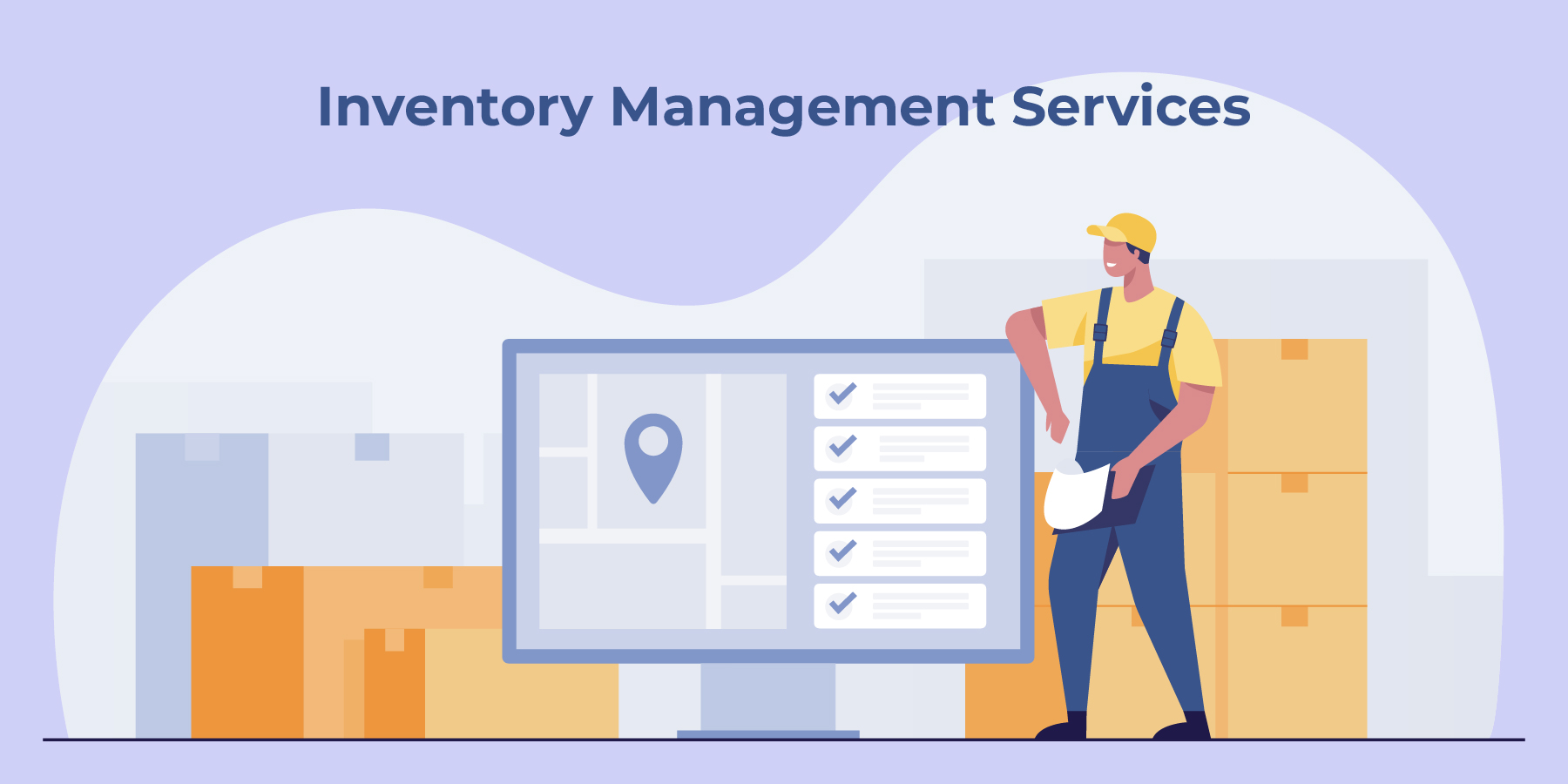Inventory management services are a crucial aspect of business operations that involves overseeing and controlling the flow of goods from raw materials to customer delivery. It is the process of efficiently managing and tracking a company's inventory, ensuring that the right products are available at the right time and in the right quantities. Effective inventory management plays a vital role in the success and profitability of businesses across various industries.
Efficient inventory management services are crucial for businesses to achieve smooth production processes, reduce inventory costs, meet customer demand efficiently, minimize lead times, and optimize their supply chains. By implementing sound inventory management practices, businesses can improve operational efficiency, drive profitability, and gain a competitive edge in the market.
Objectives of Inventory Management
1. Ensuring Smooth Production Process
Inventory management aims to ensure a smooth production process by maintaining an adequate supply of raw materials and components. Inventory management services start from raw materials and extend to customer delivery.
By having the right inventory levels on hand, businesses can prevent disruptions in production, minimize downtime, and avoid delays in fulfilling customer orders. This objective focuses on optimizing the availability of necessary inventory to support uninterrupted manufacturing operations.
2. Reducing Inventory Costs
The transcript briefly mentions "reducing the inventory's foreign," indicating the goal of inventory management services to minimize inventory costs. Inventory carries associated expenses such as storage, insurance, and obsolescence. Effective inventory management strategies aim to strike a balance between holding enough inventory to meet customer demand and avoiding excessive stock levels.
By optimizing inventory levels, businesses can reduce holding costs, improve cash flow, and minimize the risk of obsolete inventory. This objective emphasizes cost efficiency and maximizing the return on investment in inventory.
3. Meeting Customer Demand Efficiently
Meeting customer demand is a critical objective of inventory management services. By accurately forecasting customer demand and maintaining optimal inventory levels, businesses can ensure timely order fulfillment.
This objective underscores the importance of having the right products in stock when customers require them, minimizing stockouts, and enhancing customer satisfaction. Meeting customer demand efficiently leads to improved customer loyalty, increased sales, and a positive brand image.
Types of Inventory Management
1. Just-in-Time (JIT) Inventory Management
Just-in-Time is a type of inventory management that focuses on receiving inventory only when it is needed for production or customer orders. JIT aims to minimize inventory holding costs by maintaining minimal inventory levels and relying on efficient coordination with suppliers to deliver materials precisely when required. The benefits of JIT inventory management include reduced carrying costs, improved cash flow, minimized waste, and increased operational efficiency.
2. ABC Analysis
Although not mentioned in the transcript, ABC analysis is a popular method used in inventory management services to categorize items based on their value and importance. This method classifies inventory into three categories: A, B, and C. Category A includes high-value items that represent a significant portion of the inventory's value but a relatively small portion of the total quantity. Category B consists of moderately valued items. Category C includes low-value items but with a higher quantity. This classification helps businesses prioritize their inventory management efforts and allocate resources accordingly.
3. Economic Order Quantity (EOQ)
EOQ is a mathematical formula used to determine the optimal order quantity that minimizes the total cost of inventory management services. EOQ takes into account factors such as carrying costs, ordering costs, and demand rates to find the quantity that balances ordering and holding costs. The benefits of EOQ include minimizing inventory holding costs, reducing stockouts, and optimizing order frequency to maintain cost-efficient inventory levels.
The Process of Inventory Management
1. Stock Replenishment
Maintaining optimal stock levels is crucial in inventory management services. It ensures that businesses have enough inventory to meet customer demand without excessive carrying costs of stockouts. Managing inventories from raw materials to customer delivery is important.
Strategies for timely and efficient stock replenishment may include using automated inventory monitoring systems, setting up reorder points, establishing relationships with reliable suppliers, and implementing just-in-time (JIT) or vendor-managed inventory (VMI) systems.
2. Excess Inventory Reduction
Excess inventory can have negative consequences for businesses, such as increased carrying costs, the risk of obsolescence, and decreased cash flow. Techniques for identifying and reducing excess inventory may involve conducting regular inventory audits, implementing demand forecasting and planning, using sales and promotional strategies, offering discounts or incentives for slow-moving items, and establishing effective inventory control measures.
3. Framing Appropriate Inventory Levels
Determining appropriate inventory levels requires careful consideration of various factors. Factors to consider when framing appropriate inventory levels include customer demand patterns, lead times, seasonality, production capacity, cost considerations, and desired service levels.
Methods for establishing optimal inventory levels may involve using mathematical models like Economic Order Quantity (EOQ) or reordering points, employing ABC analysis to prioritize inventory items, utilizing technology-driven inventory management systems, and conducting regular performance analysis and adjustment.
Significance of Inventory Management in Supply Chain Optimization
1. Impact of Efficient Inventory Management on Overall Operations
Efficient inventory management services positively impacts various aspects of overall operations. By maintaining optimal inventory levels, businesses can reduce stockouts, prevent production delays, and ensure smooth operations. This leads to increased productivity, minimized downtime, and improved customer satisfaction.
Effective inventory management also enables businesses to streamline processes, improve resource allocation, enhance order fulfillment, and achieve better coordination with suppliers and other stakeholders.
2. How Inventory Management Contributes to a Balanced Supply Chain
Inventory management is a critical component of achieving a balanced supply chain. It involves maintaining the right amount of inventory at each stage of the supply chain, from suppliers to manufacturers to distributors. By effectively managing inventory levels, businesses can minimize bottlenecks, reduce excess inventory, and improve demand-supply alignment.
Inventory management contributes to supply chain optimization in the following ways:
- Improved Demand Forecasting: By accurately forecasting customer demand and aligning it with inventory levels, businesses can minimize stockouts and avoid overstocking. This helps in meeting customer demand efficiently and reducing order lead times.
- Efficient Resource Utilization: Proper inventory management services ensure the efficient use of resources, such as warehouse space, labor, and transportation. It helps in optimizing storage capacity, reducing handling costs, and maximizing operational efficiency.
- Cost Reduction: By minimizing inventory carrying costs, obsolescence, and stockouts, businesses can achieve cost savings. This allows for better financial management and increased profitability.
- Enhanced Collaboration: Effective inventory management services foster collaboration and communication between different entities within the supply chain. This includes sharing demand forecasts, coordinating production schedules, and implementing efficient order fulfillment strategies.
- Improved Customer Satisfaction: By maintaining optimal inventory levels, businesses can fulfill customer orders promptly, minimize backorders, and ensure product availability. This leads to improved customer satisfaction, repeat business, and a positive brand reputation.
Conclusion
By implementing sound inventory management strategies, businesses can achieve a competitive edge in the marketplace. Efficient inventory management services ensure smooth production processes, reduce costs, meet customer demand promptly, and contribute to overall operational efficiency. It helps businesses maintain optimal inventory levels, avoid stockouts and excess inventory, and streamline supply chain operations.
With Wow Customer Support inventory management services can help you plan your inventory better to ensure you can fulfill orders promptly. By outsourcing inventory management services to us, you can keep your store open 24/7.
This blog is inspired by the video “What is Inventory Management | Objectives | Types | Process | Explained in Detail” by “Study Practically.”






